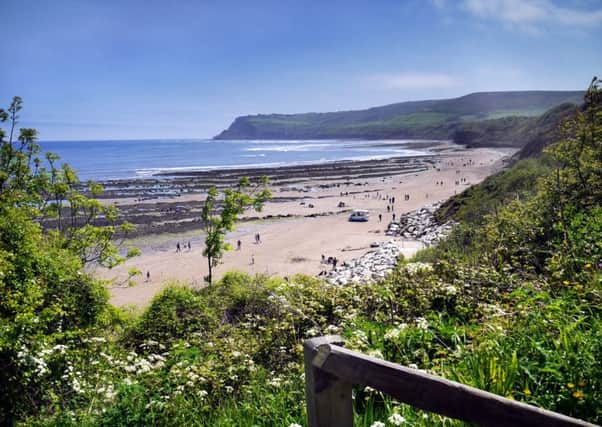Country & Coast: Rich fossil hunting on Yorkshire's shores


Almost a dozen or so fossil hunters are there, keeping an eye on the incoming tide as they methodically work their way along the top of the beach to check the latest charcoal-coloured rocks disgorged by the mudstone.
The cliffs here are highly - I love this word - fossiliferous. That is to say, they produce a never-ending stream of the preserved remains of animals, fish, shells, corals, plants and even the footprints of dinosaurs that lived around 180 million years ago.
Advertisement
Hide AdAdvertisement
Hide AdIn the UK, the shoreline between Staithes and the chalk headland at Flamborough is second only to Dorset for the number of fossilised remains found by collectors. It truly deserves its title of the Yorkshire Jurassic Coast.
Besides Robin Hood’s Bay, the main fossil hotspots are at Port Mulgrave near Staithes and Speeton at the south end of Filey Bay. So many fossilised remains of plants and marine life are found here that they now support a small industry. There are plenty of shops selling items like ammonites - an extinct group of marine molluscs - and bits of the ichthyosaur, or fish lizard, which lived between 250 and 90 million years ago.
Back then, Britain occupied a different part of the globe, being nearer to the equator, and the land we know as Yorkshire lay beneath tepid tropical seas.
The plants and creatures which inhabited the land then ended up in a soup of sand and mud as the sea level receded, then decomposed and left their casts in newly formed rocks. That’s a fascinating thought, standing below the cliffs at Robin Hood’s Bay and watching someone with a geological hammer made of chrome vanadium steel expose something which spent its short life under water and had never before seen the light of day.
Advertisement
Hide AdAdvertisement
Hide AdIt is clear from the number of broken rocks scattered beneath the cliffs that this is Yorkshire’s fossil central.
After a particularly wet winter I have seen these cliffs spitting out rocks like fruit pips, and apparently that is the best time for fossil hunting.
Four types of ammonites are usually found, along with fragments of a very large clam called a pinna, some of which were almost four-foot in length. The family of mollusc has survived millions of years and is still found in areas of the Mediterranean.
I am told that from time to time bits of the pterosaur, a gigantic winged lizard sometimes known as the “flying dinosaur”, turn up on this part of the coast. Of course, I can go into shops in Robin Hood’s Bay or Whitby and buy this or other fossils of every size and description, but hunting for them seems a lot more fun.
There are plenty of beginners’ beach expeditions advertised on the internet, but next time I’m there I will take my own hammer to crack open a few rocks and see for myself.